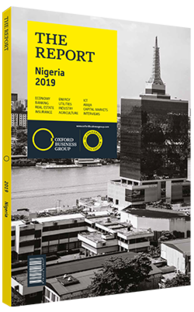Cement sector enters period of growth in Nigeria with demand and earnings expected to rise
Amid the tentative recovery from recession, the cement market grew rapidly in the first half of 2018, as sales by volume increased by 9.8% over the first half of 2017, from 10.2m tonnes to 11.2m tonnes. The Nigerian manufacturer Dangote Industries led the way in that growth, as sales of locally produced materials grew by roughly 11% between those same periods, from 6.6m tonnes to 7.3m tonnes, and grew the firm’s market share to 65.7%. Meanwhile, the Nigerian operations of Lafarge Africa, itself a subsidiary of LafargeHolcim, a French producer of building materials, increased the sales volume of Nigeria-produced cement by 22% between the same two periods, largely on the strength of exports to Ghana that began in the fourth quarter of 2017. This growth helped the firm to shrug off persistent concerns over inflationary pressure and a weak exchange rate, and a Lafarge report expected solid performance and in the latter half of 2018, underpinned by the ongoing recovery, growing demand and improvements in logistics.
Rising Consumption
These results appear to be in line with the February 2018 forecasts of the financial services firm RMB Nigeria, which expects cement consumption to rise by 7% over the year and reverse the 17% contraction recorded in 2017. That increase will be driven by road building and real estate development meant to address a housing deficit, which together could demand 77m tonnes of cement through to 2020. Meanwhile, the Central Bank of Nigeria’s purchasing managers’ index for demand for new cement increased 16.7 points between September and October 2018, from 50.0 to 66.7, which is indicative of significant growth, following relative stagnancy since March 2018.
Consolidation
As firms look to capitalise on such prospects, merger and acquisition (M&A) activity is picking up. Last month Cement Company of Northern Nigeria (CCNN), owner of a new factory at Sokoto capable of producing 1.5m tonnes per annum, announced plans to merge with Kalambaina Cement, a subsidiary of BUA Cement. The proposed merger, which is contingent on regulatory and shareholder approval, is expected to increase the new firm’s annual capacity to 2m tonnes There are also indications that M&A activity might occur among some larger firms next year. Devakumar Edwin, executive director of Dangote Group, said in July 2018 that the company has likely gone as far as it can in developing from the ground up, and pointed to acquisitions as a route to further growth. The company has considered listing on the London Stock Exchange in 2019, which could raise capital to fund M&A activity.
Infrastructure Gaps
Prospects for cement producers could be further buoyed by successes in attracting private investment in a series of big-ticket infrastructure projects, which the administration exhibited at the African Development Bank (AfDB’s) Africa Investment Forum in November 2018.
At the event, which aims to accelerate private capital funding in Africa, the Nigerian delegation showcased a rapid bus transit system for Abuja and a gas commercialisation project, among others. The AfDB intends to work with the government, institutions and the private sector to prepare the projects, focusing on improving profitability and lowering risk profiles. Overall, the bank estimates that improving Nigerian infrastructure will require up to $3trn in investment over the next 22 years. The scale of such an undertaking will create plentiful opportunities for private investors, who will be key to securing funding, and for cement producers to manufacture the goods to supply such development.
In the interim, however, gaps in the transport network will likely continue to generate additional costs for players along the supply chain and squeeze turnover at the margins. The expense of shipping around the country can exceed N14,000 ($45) per tonne, which comprises as much as one-third of production costs, according to Abdul Samad Rabiu, chairman and CEO of BUA Group. He told local media in August 2018 that much of this cost is due to chronic logistical shortcomings, with carrying capacity limited by poor roads and rail links.
You have reached the limit of premium articles you can view for free.
Choose from the options below to purchase print or digital editions of our Reports. You can also purchase a website subscription giving you unlimited access to all of our Reports online for 12 months.
If you have already purchased this Report or have a website subscription, please login to continue.

